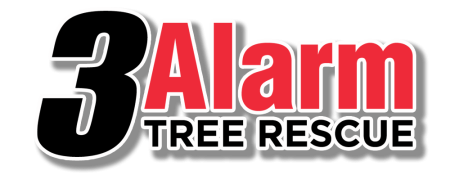Cracks Can Cause Hazards in Trees
Get Tree Cracks Inspected
Inspection from industry certified arborists can prevent severe property damage. Cracks can cause hazards in trees which can then cause property damage.
Tree failure is a major cause of property damage, especially after high winds. If the wind is strong enough, even healthy trees can be uprooted or broken. But it might not take a storm or high winds to cause a cracked or rotted tree to fail under its own weight.
“Homeowners worried about trees falling and damaging property should call a qualified arborist for an on-site inspection,” advises Richard Hancock, owner and certified arborist with 3 Alarm Tree Rescue in Frisco, Tx. Richard notes that trees are genetically designed to withstand storms, but all trees can fail – and defective trees fail sooner than healthy trees.
“To a professional arborist,” notes Richard, “certain defects are indicators that a tree has an increased potential to fail.”

Cracks in Tree Trunks
Cracks in tree trunks can be one of the major indicators of an unstable tree. Cracks in trees can cause hazards. Most cracks are caused by improper closure of wounds or by the splitting of weak branch unions. They can be found in branches, stems or roots, and vary in type and severity.
There are horizontal and vertical cracks. Horizontal cracks run across the grain of the wood and develop just before the tree fails, making them very difficult to detect. Vertical cracks run with the wood grain along the length of the tree and may appear as shear or ribbed cracks.
Shear cracks can run completely through the stem and separate it into two halves. As the tree bends and sways in the wind, one half of the stem slides over the other, elongating the crack. Eventually the enlarging crack causes the two halves of the stem to shear apart.
Ribbed cracks are created as the tree attempts to seal over a wound. Margins of the crack meet and mesh but are reopened due to tree movement or extremely cold temperatures. Thicker annual rings are created in order to stabilize the developing crack at the location of the wound. This forms the ribbed appearance over a period of many years.
These cracks put a tree at high risk of failure and are especially dangerous when combined with other defects or with advanced decay.
Get a Professional's Advice
A qualified arborist can determine the potential for failure by measuring the shell thickness in a few locations around the tree’s circumference, determining the width of the crack opening, and looking for the presence of any other type of defect.
What is the risk? Cracks are hazardous because they compromise the structure of the tree. They can eventually split the stem in two and are very dangerous when combined with internal decay. The presence of multiple cracks and decay indicates a potentially hazardous tree.
Have your tree evaluated by professionals One of our professional, emergency trained arborists can assess your landscape and work with you to determine the best care for your trees.
Cabling and Bracing Cracked Trees
Plan of action Trees can lose their structural integrity due to a variety of reasons such as pests, disease, or adverse weather. Cabling and bracing can help support a tree and may prevent the need to remove the tree outright.
The method of cabling and bracing a tree is sometimes necessary to reduce the chance of failure due to structural weakness. A common structural weakness is co-dominate stems. As most trees grow, they generally develop one main “leader”. In a co-dominate stem there is not just one main “leader” there is often two and sometimes even three that all grow upright and are roughly the same size. This presents a structural weakness at those stems’ attachment point that can be mitigated by cabling and bracing.
The two most common types of structural support for a tree is cabling and bracing. A tree can be cabled without being braced but not braced without being cabled. The rods used for bracing are much weaker than the cables. The cables used in the process are rated at over 15,000 lbs tensile strength and are placed high in the tree where they have more leverage.
Call 3 Alarm Tree Rescue
Contact our trained arborists.
Hiring Tree Experts At 3 Alarm Tree Rescue, our emergency trained team of tree professionals, would never compromise tree health and safety, or that of our customers and staff. Years of experience and the right equipment enable us to provide emergency tree services and get the job done efficiently and safely.
This allows us to establish and implement a proficient plan for your landscape that keeps everyone safe while also conserving the life and beauty of the tree.




